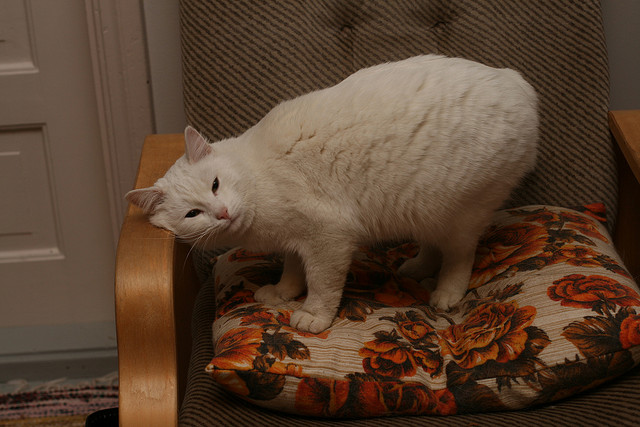Why do cats mark their territory? How do they do it?
Why do cats mark their territory? How do they do it?
For cats, marking is of utmost importance, especially from a behavioral point of view. Some cats may mark their humans, other may mark the spaces they live in, but most of them use both methods to signal that they belong there. In an unknown space, a cat usually marks territory by scratching, head-bunting and spraying. They do it because it is a way of defining that particular environment and pheromones help cats understand its limits.

Image credit: Flickr cc
A cat marks its humans or its territory using various methods:
- kneading is performed ever since kittens are born. While they’re looking for their mothers’ mammary glands, they slowly but surely begin to get used to massaging the belly of their moms. While most people think kneading is about feeling scents that kitties release through their paws, I’d say it has something to do with the milk the mother secretes. Cat moms are more relaxed when kittens massage their bellies, which is why inside the body, there’s a sudden boost of oxytocin; the latter is a hormone that helps milk to be released more easily
- cheek-rubs and head-bunts are also used to release pheromones. Cats use this sort of marking with spaces and people they like to create relationships with, therefore defining friendly mates
- scratching is related to the kneading we were mentioning above, and to the pheromone-releasing paws in particular
- middening rarely happens in the case of indoor cats, but it will occur in cats that live outdoors. Think of it this way: if an intruder stepped on your territory during the night, wouldn’t you feel the need to tell him to never come back? Middening is a very specific sort of marking, because feces are left uncovered, for rivals to see.
- spraying is probably the most common method of marking and it is used by all cats. It’s quite frustrating for pet owners, but the rate of spraying can be decreased by neutering, particularly in the case of male cats.
People need to understand that cats don’t mark their territories out of spite or to get revenge; they do it because they are indeed related to wild cats. In the wild, marking is extremely important when it comes to defining social class. It is an instinct that will not disappear with time, because its message is deeply rooted inside the genetic memory of cats.










I have a 4 year old female cat she has been neutared. Around 2 years ago one of my sons moved out into a home of his own . Really from that time lucy my femail cat has been urinating in the house. She is a house cat. She always goes to the same spot to do this. I have tried a few things to detet her but she still does it. I now keep a dog training mat in that spot. Some one has said that the reason she is doing this is due to change with my son moving.out. Unfortuantly we lost our beautiful son in october 2013.